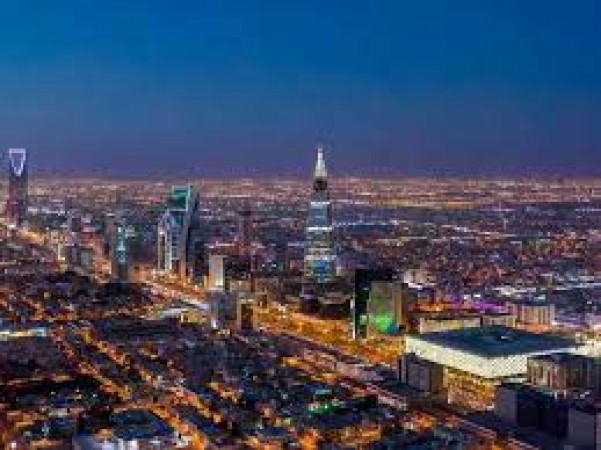
In recent years, the country has made remarkable strides in various aspects, positioning itself as a regional and global leader in many sectors. However, the journey to progress never stops, and the country continues to set its sights on ambitious goals for the future. This article will explore the future landmarks that the country aims to achieve, outlining its vision, strategies, and challenges in pursuing a path of sustained growth and development.
Background on the Country's Current Achievements
Before diving into the country's future aspirations, it is essential to acknowledge its current achievements. Over the years, the nation has experienced significant economic growth, social progress, and technological advancements. The country's stable political environment, business-friendly policies, and skilled workforce have attracted substantial investments, contributing to its current standing on the global stage.
The Country's Vision for the Future
Looking ahead, the country has outlined a comprehensive vision for its future development. This vision is not limited to economic growth but also encompasses improvements in education, healthcare, infrastructure, environmental sustainability, and overall well-being of its citizens. The aim is to create a prosperous, inclusive, and sustainable society that can withstand future challenges while embracing opportunities.
Key Sectors Targeted for Growth
Technology and Innovation
To remain competitive in the digital age, the country seeks to become a hub for technology and innovation. It aims to invest heavily in research and development, foster a culture of entrepreneurship, and support startups and tech companies. By leveraging emerging technologies, such as artificial intelligence, blockchain, and renewable energy, the country aims to drive its economy forward.
Education and Skills Development
The country recognizes the significance of a well-educated and skilled workforce in building a knowledge-based economy. Therefore, it plans to revamp its education system, focusing on STEM (Science, Technology, Engineering, and Mathematics) education and vocational training. By equipping its citizens with the necessary skills, the country aims to empower them to participate actively in the global economy.
Infrastructure and Urban Development
To support its growing population and economy, the country envisions investing in modern infrastructure and sustainable urban planning. This includes improving transportation networks, developing smart cities, and promoting green building practices. Such initiatives are expected to enhance the overall quality of life for citizens and attract further foreign investments.
Environmental Sustainability
As part of its commitment to environmental stewardship, the country aims to transition towards a low-carbon economy. It plans to invest in renewable energy projects, implement stricter environmental regulations, and promote sustainable practices in industries. By doing so, the country hopes to mitigate the impacts of climate change and secure a greener future.
Healthcare and Well-being
The well-being of its citizens remains a top priority for the country. It seeks to strengthen its healthcare system, improve access to quality medical services, and invest in preventive healthcare. The goal is to enhance life expectancy, reduce mortality rates, and ensure a healthy and productive population.
Economic Diversification
While the country has achieved success in certain sectors, it acknowledges the importance of economic diversification to ensure resilience against external shocks. By reducing its dependence on a single industry, the country aims to create a more balanced and sustainable economy.
Government Initiatives and Policies
Achieving these future landmarks requires a coordinated effort from the government. The country has already launched various initiatives and policies to support its vision. These include tax incentives for businesses, research grants for academics, funding for infrastructure projects, and social welfare programs to support vulnerable communities.
Collaboration with International Partners
The country recognizes that no nation can achieve its goals in isolation. It actively seeks partnerships with other countries, international organizations, and private enterprises to share knowledge, resources, and expertise. By collaborating on a global scale, the country aims to accelerate its progress and contribute to solving global challenges.
Challenges and Potential Obstacles
While the future seems promising, the country faces several challenges in its pursuit of these landmarks:
Funding and Investment
Implementing ambitious projects requires significant funding and investment. The country needs to attract foreign direct investment and effectively allocate its resources to fund various initiatives.
Political and Social Challenges
The country must navigate its political landscape and address any potential social challenges that could hinder progress. Building consensus among different stakeholders is crucial for successful execution.
Technological Barriers
While the country aspires to be at the forefront of technology, it also faces challenges in adopting and integrating advanced technologies. Addressing issues like digital infrastructure and data security will be vital.
The Role of the Country in the Global Landscape
As the country moves closer to achieving its future landmarks, its influence on the global stage is expected to grow. It can serve as a role model for other nations, inspire innovation, and foster international cooperation. the future landmarks that the country aims to achieve reflect its determination to build a prosperous and sustainable future for its citizens. By focusing on technology, education, infrastructure, sustainability, healthcare, and economic diversification, the country is poised to make significant strides. However, it must address funding challenges, navigate its political landscape, and overcome technological barriers to realize its vision fully.
Dark Web and Privacy: Balancing Freedom and Security
Upskilling for Tomorrow: How Indians Embrace Lifelong Learning